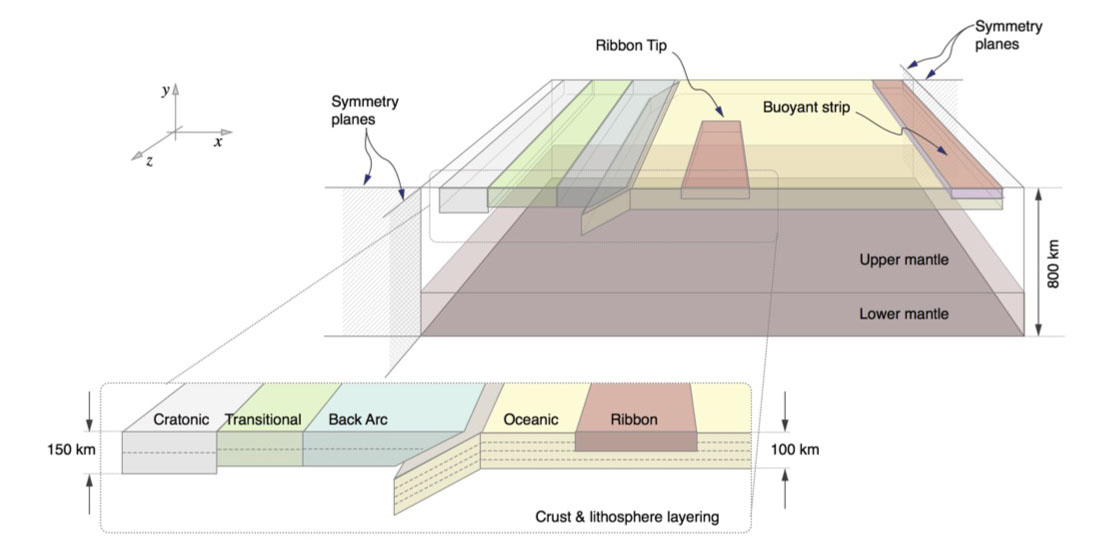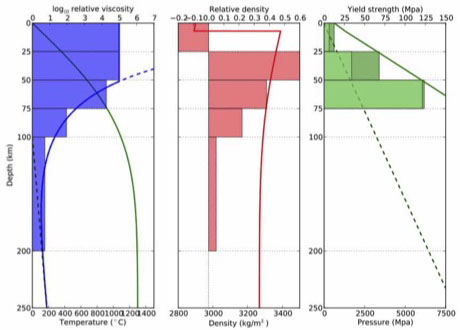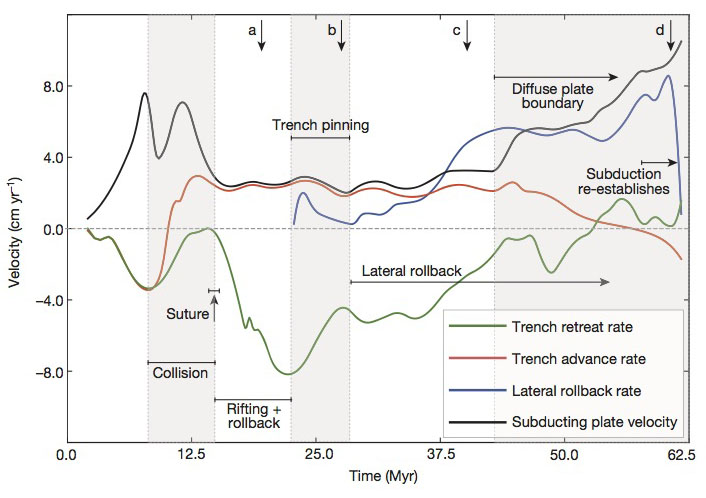Continental accretion
L. Moresi, P. G. Betts, M. S. Miller & R. A. Cayley ,
Software Used:
- Underworld 1.0
Model Setup:
 Initial geometry of the distinct material domains in the numerical model, not to scale. The subducting plate is 100km thick, 3,000kmwide and 7,000kmin length, and is built from 4 layers. The overriding plate has three domains: a back-arc region (1,200 km) a transitional region (350 km) and a continental backstop (750 km), each of which comprises two layers of equal thickness. The indenting ribbon is 50km in thickness, 1,500km wide and 500km deep (perpendicular to the convergence direction). Each of the vertical boundaries is a symmetry plane.
Initial geometry of the distinct material domains in the numerical model, not to scale. The subducting plate is 100km thick, 3,000kmwide and 7,000kmin length, and is built from 4 layers. The overriding plate has three domains: a back-arc region (1,200 km) a transitional region (350 km) and a continental backstop (750 km), each of which comprises two layers of equal thickness. The indenting ribbon is 50km in thickness, 1,500km wide and 500km deep (perpendicular to the convergence direction). Each of the vertical boundaries is a symmetry plane.
Conditions:
 Viscosity, density and yield strength for each of the domains in the model setup for a 80-Myr-old lithosphere
Viscosity, density and yield strength for each of the domains in the model setup for a 80-Myr-old lithosphere
Results:
 A comparison of velocities during collision, accretion and recovery. Shown are the velocities of the subducting plate (black lines), the retreating end of the plate boundary (‘Trench retreat rate’, green), the colliding end of the plate boundary ‘Trench advance rate’, red), and the cusp of the laterally retreating trench (‘Lateral rollback rate’, blue). Negative velocities indicate retreat, positive velocities indicate advance.
A comparison of velocities during collision, accretion and recovery. Shown are the velocities of the subducting plate (black lines), the retreating end of the plate boundary (‘Trench retreat rate’, green), the colliding end of the plate boundary ‘Trench advance rate’, red), and the cusp of the laterally retreating trench (‘Lateral rollback rate’, blue). Negative velocities indicate retreat, positive velocities indicate advance.